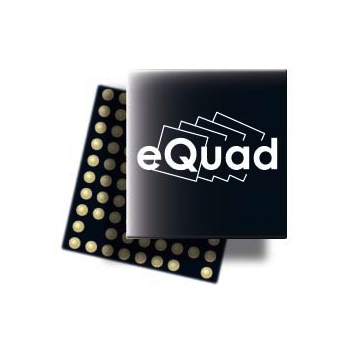 This past week, we’ve been introduced to next generation processors from Qualcomm, Nvidia and Samsung, and now it’s the turn of ST-Ericsson, which has revealed its new NovaThor L8580 chip at CES 2013. While ST-Ericsson doesn’t share quite the same level of name recognition as its peers, its NovaThor chips found their way into a wide variety of handsets during 2012, and this more powerful model could see it become better known this year.
This past week, we’ve been introduced to next generation processors from Qualcomm, Nvidia and Samsung, and now it’s the turn of ST-Ericsson, which has revealed its new NovaThor L8580 chip at CES 2013. While ST-Ericsson doesn’t share quite the same level of name recognition as its peers, its NovaThor chips found their way into a wide variety of handsets during 2012, and this more powerful model could see it become better known this year.
ST-Ericsson says the L8580 is the world’s fastest and least power hungry mobile processor with an integrated LTE modem available, a title it says is thanks to a clever manufacturing process known as FD-SOI. Without going into detail, this allows it to operate either at full speed, or power down to an energy saving setting where only one core is active. The company call this eQuad, and see it as an alternative to other power-saving solutions such as the companion core system popularized by Nvidia.
Capable of running at speeds up to 2.5GHz, the NovaThor L8580 uses a PowerVR GPU – similar to the ones used by Apple – and has a modem which can support LTE and HSPA+ on GSM, WCDMA and the Chinese TD-SCDMA bands, giving it worldwide appeal. There’s all the usual connectivity options, from GPS to Wi-Fi Direct built-in, plus it can handle displays with a 1080p resolution.
A key difference between the NovaThor L8580 and some of the other processors revealed at CES is it is based on ARM Cortex A9 architecture, and not the latest ARM Cortex A15 architecture, as seem on Samsung’s Exynos 5 Octa and Qualcomm’s Snapdragon 800. We’ll have to wait until some benchmark figures appear to compare them, but as chips like the Exynos 4 Quad also use ARM Cortex A9 architecture, it certainly won’t be slow, and that’s before eQuad comes into the equation.
ST-Ericsson has worked closely with manufacturers such as Samsung and Sony over the past year, and we’re sure to see the L8580 appear in a device from both in the future. However, there is another possible home for its new NovaThor eQuad chip in 2013, as a partnership between ST-Ericsson and Jolla was announced last November, paving the way for an eQuad Jolla phone, perhaps?
The company has said samples of the chip will be available to its partners before the end of March.
Updated on 03/14/13 at 10.00am by Andy: ST-Ericsson’s marketing team want you to think the NovaThor L8580 is a quad-core chip, but sadly, it’s not. That’s not to say it isn’t rather clever, as by using the eQuad system, its dual-cores have two power modes – as described above – which lets them run at full speed or in an energy saving mode. A Mobile World Congress, ST-Ericsson demonstrated a 3GHz version of the chip, which out-performed the Galaxy S3 and the Nexus 10 tablet. According to a report at PCMag, phones using the L8580 NovaThor platform will arrive in the U.S. later this year.
Article originally published 1-11-2012.




